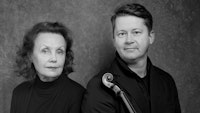In response, this project poses some fundamental questions:
- What new strategies for composition and performance will have to be developed to master the multitude of sign systems emergent from music’s expanded material array?
- What new significance is emerging from the layers in an extended composition of sound, language and movements, and
- how do we evaluate it?
The challenge for composers and musicians is that in combination with language and movements, music tends to lose battle for the receiver’s attention and understanding. Of the three sign systems, language is by far the most dominant, then comes the visual and, finally – organized sound. An extended composition must consciously work with attention to this hierarchy, which is not always the case in many works produced today. This project invites composers and musicians to cooperate in the making of, and reflection upon new works that explore different paths in this expanded material.
Method
To help develop the material in the works that are outside organized sound, the project involves practitioners from theatre and dance to guide and supervise the development of these pieces in workshops. Creating a close dialogue between musicians, composers, dramaturge, dancer or actor, but with the aim to maintain the roles of the composer and the autonomy of the composition. Incorporating language and movements in the musical composition requires new skills taken from theatre and dance, and possibly a new composition technique.
Context
In the radical period from the 1950s to 70s, music theatre and instrumental theatre challenged the modernistic fetish of “absolute music”, through the works of composers and performers like Kagel, Schnebel, Cage, Globokar and Aperghis among others. They opened up the domain of musical composition and performance to include space, body and movements, and developed music theatre and instrumental theatre into an independent subgenre of contemporary music, a new tradition of music theatre. This is today a tradition that is deeply respected and has been an inspiration for many but, as Paul Craenen writes in his book “Composing under the skin”, there has been a rapid development of, and expanded compositional thinking about, the use of the human body in music with the new digital technologies, encouraging composers and performers to explore unusual mappings between sound and image that would be unthinkable with older technology.
New works
All pieces in the project will be developed in stages of workshops, presented in seminar settings before being performed at concerts. The six composers in the main project will each produce one piece. The pieces will be composed for the participants of the ensemble, Asamisimasa, with the possible addition of other performers such as a singer or a dancer. The aim of the workshops will be to challenge the compositional proposed combination of words, structured sounds and movements with input and supervision from a dramaturge, director/actor or a dancer/choreographer. The workshops and seminars will be held at the different institutions involved. As a culmination, there will be large concert of all the pieces.
Project organisation
The project is a collaboration between The Norwegian Academy of Music, Norwegian Theatre Academy and Anton Bruckner Universität and renowned international performers and composers, such as Matthew Shlomowitz, Carola Bauckholt, Kristine Tjøgersen, Asamisimasa, Tanja Orning and Christian Blom.
The project will be documented on Research Catalogue.

